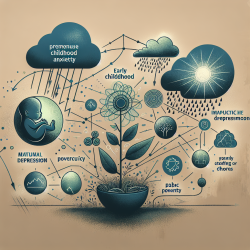Unlocking the Potential of Maternal and Child Health: Lessons from Over a Century of Leadership
In the ever-evolving landscape of healthcare, the Maternal and Child Health Bureau (MCHB) stands as a beacon of progress and innovation. Founded in 1912 as the Children’s Bureau, it has been at the forefront of improving the health and well-being of mothers, children, and families in the United States. This blog delves into the insights from the research article "Over a Century of Leadership for Maternal and Child Health in the United States: An Updated History of the Maternal and Child Health Bureau," highlighting key takeaways that can enhance your practice and encourage further exploration.
The Evolution of Maternal and Child Health
The MCHB has undergone significant transformations since its inception, adapting to the changing needs of maternal and child health (MCH) populations and legislative priorities. From its early days of advocating for child welfare to its current role in addressing emerging health issues, the Bureau has consistently led initiatives that have shaped MCH policies and practices.
Key Milestones and Their Implications for Practitioners
- Sheppard-Towner Maternity and Infancy Care Act (1921): This landmark legislation introduced federal-state partnerships for MCH programs, emphasizing the importance of public health approaches. Practitioners can draw inspiration from this model to foster collaborations that enhance service delivery.
- Title V of the Social Security Act (1935): The establishment of Title V grants laid the foundation for comprehensive MCH services, including care for children with special health needs. This underscores the importance of integrating diverse services to address the multifaceted needs of children and families.
- Emergency Maternity and Infant Care Program (1943-1949): This program provided large-scale public medical care, setting a precedent for future healthcare coverage initiatives. Practitioners can leverage lessons from this program to advocate for policies that ensure access to essential healthcare services.
Encouraging Further Research and Implementation
The history of the MCHB is rich with examples of successful interventions and policies that have improved health outcomes. Practitioners are encouraged to delve deeper into the Bureau's initiatives to identify strategies that can be adapted to their local contexts. By understanding the historical context and the evolution of MCH policies, practitioners can better advocate for and implement effective programs that address current challenges.
Moreover, the Bureau's focus on data-driven decision-making and evidence-based practices aligns with the goals of many healthcare providers today. By integrating these principles into their practice, professionals can enhance the quality of care and outcomes for children and families.
Conclusion
The Maternal and Child Health Bureau's century-long journey offers valuable insights for practitioners seeking to improve their skills and impact in the field of maternal and child health. By exploring the Bureau's history and implementing its successful strategies, healthcare providers can contribute to the ongoing effort to ensure the health and well-being of all mothers, children, and families.
To read the original research paper, please follow this link: Over a Century of Leadership for Maternal and Child Health in the United States: An Updated History of the Maternal and Child Health Bureau.










